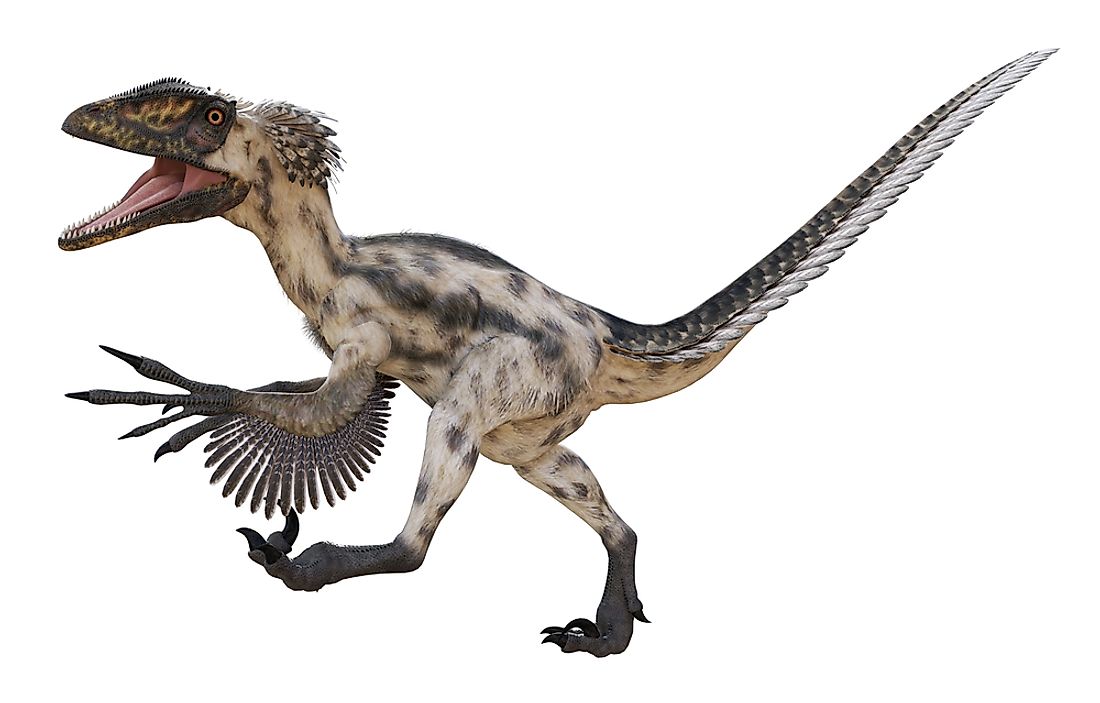Deinonychus Facts: Extinct Animals of the World

Deinonychus is an extinct dinosaur that belonged to the genus Carnivorousdromaeosaurid coelurosaurian dinosaurs. They lived during the early Cretaceous Period which was approximately 115-108 million years ago. Paleontologists discovered the fossil remains of the species Deinonychus antirrhopus in the US states of Utah, Oklahoma, Montana, and Wyoming. The word Deinonychus has a Greek background suggesting the words “terrible” and “claws.” Their claws were large and formed a sickle shape on the second toe of the rear feet. The species name, antirrhopus, simply means “to counterbalance”, thus suggesting the Deinonychus’ long tail which had rigid tendons and bones that supported and balanced the whole body. Paleontologist John Ostrom did extensive research and wrote about the Deinonychus in detail.
Description
In 1969, Ostrom published the name Deinonychus antirrhopus and thereafter a detailed monograph. In his descriptions, the Deinonychus grew to a full length of approximately 11.2 feet, 16.1 inches of which was for the skull and 2.9 feet for the hip height. Estimates show the total weight to be between 161 pounds and 220 pounds. Inside the broad triangular skull, the jaws had almost seventy curved teeth each looking like a blade. The snout was narrow and the jugal bones broader which gave the Deinonychus a good stereoscopic vision. Both the skull and the lower jaw had large openings between the eyes and nostril that made the skull lighter. The two manus had three claws each with the middle one being longest whereas the hind limbs had sickle-shaped claws on the middle digit suggesting an adaptation to predation. Researchers suggested that the Deinonychus had feathers like those found on limbs and tails of modern birds.
Palaeobiology
The Deinonychus were carnivores and hunted in tactical groups. This assumption anchored on the fact that then Deinonychus’ preys, tenontosaurs, were way bigger and heavier. However, this theory faced questions of creditability from several sources who base their arguments on the fact that modern-day archosaurs like crocodiles are solitary hunters since these modern species have their own internal conflicts especially because larger members try to dominate. The bite force of the Deinonychus was between 4,100 and 8,200 newtons and could bite through a bone. Different sources believe that the Deinonychus limbs performed different functions like kicking and climbing while the claws might have been used for cutting and disemboweling preys as well as for defense. Although films depict dinosaurs to be very fast animals, measurements of the ratio of the femur to the tibia in the Deinonychus suggest that it was not fast, even compared to the modern ostrich.
The Deinonychus in Popular Culture
Since the early 1990s, there has been an increased reference to dinosaurs, including the Deinonychus, in books and films. In the novels Jurassic Park and The Lost World, as well as in the films Jurassic Park and Jurassic World, the Deinonychus is used but under other names including the Velociraptor due to what the series’ writers termed as being “a more dramatic name.” However, most of the Jurassic World films use the name Deinonychus and, coincidentally, finished production at the time when John Ostrom, an expert in studying the Deinonychus, was also publishing more papers on the same.











